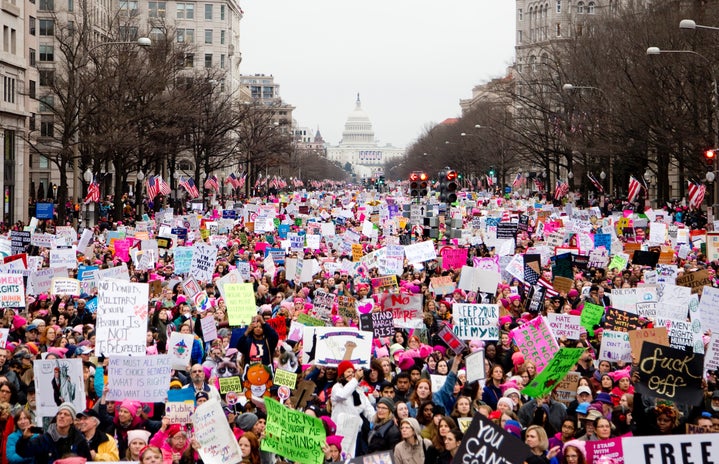Females make up 51% of Earth’s population and almost 100% of child bearers, yet globally lack equal access to the same education, reproductive rights, and privileges that males do. Believe it or not, these inequalities can have significant impacts on agriculture, the economy, and the environment. Addressing the inequalities in these categories can significantly reduce greenhouse gases. Here’s why:
Agriculture
Women make up roughly 43% of the agricultural labor force and are responsible for producing 60% to 80% of crops in the poorer parts of the world. Yet women around the world face the challenge of farming without equal access to land, compensation, training, and other resources that significantly decrease the potential of their agricultural yields.
The Food and Agriculture Organization of the United Nations estimates that if women received equal access to agricultural resources, their farm yields will increase by 20 to 30%, feeding one hundred million to one hundred and fifty million people that would otherwise be hungry.
Given that the global population is expected to rise to 9.7 billion by 2050, it is imperative that we increase our agricultural yields to address hunger.
When farms produce higher yields per acre, less land is deforested and fewer pesticides and gallons of water are used. Simply giving women equal access to resources and training will save resources, decrease deforestation, and provide nutrition to millions of hungry people around the world.
Property Ownership and Capital
Women only make up 10-20% of landowners. Owning land is an economic investment, and women who lack the right to land face a greater risk of displacement and hunger.
Lack of capital leaves women unable to afford farming resources such as fertilizer, water, and seeds, leaving them unable to produce an adequate amount of food and earn an income. On average, women in poorer countries are more likely to invest higher percentages of their income into education, health, and nutrition for their families and communities compared to men.
Sex Education and Family Planning
It should be noted that overpopulation isn’t necessarily the cause of climate change, but it does have significant issues and could cause major problems in the future as overpopulated countries industrialize. Though they have lower carbon footprints per capita, overpopulated countries typically have agricultural based economies, high maternal and infant mortality rates, and a lack of access to adequate healthcare.
As overpopulated countries industrialize and begin to consume higher amounts of electricity, consumer goods, and food, it is important for fertility rates to stay at replacement level. Replacement level is roughly 2.1 children per couple to replace the parents of the children and account for any infant mortality. Keeping fertility at this rate should not (and cannot) be done through abortion bans and restrictions.
Though abortion restrictions are becoming increasingly frequent in the United States, regardless of if you identify as “pro choice” or “pro life,” they fail to address the underlying problem of unplanned pregnancies, and don’t actually have a significant impact on the abortion rate. When abortion is banned, typically women resort to unsafe methods to terminate their pregnancies, especially in countries with high maternal mortality rates. Unsafe abortions, ones performed by non medical professionals in an environment lacking the correct medical equipment, significantly increase the chance of infection, infertility, and even death for the pregnant person. In summary, abortion restrictions still result in roughly the same amount of abortions that would take place were abortion legal, yet these are coupled with maternal injuries and deaths.
The best way to actually decrease abortion rates, according to a global study done by the Guttmancher institute, is for governments to invest in contraceptives and comprehensive sex education. Lower income women obtain the majority of abortions, and that number will decline as contraceptives become more affordable and accessible. Additionally, countries that teach abstinence-based sex education consistently have higher rates of teen pregnancies and STDs. So, in reducing unplanned pregnancy and abortion rates, the government’s main focus should be on reducing unplanned pregnancies through better sex education and access to contraceptives.
Even more effective in reducing fertility rates as well as giving women more independence is allowing girls and women around the world to access the same education that boys and men are entitled to. Girls who lack an education will be more likely to end up financially dependent on a husband and unable to contribute to the economy and help come up with solutions to climate change.
What can we do to address gender inequality?
Women’s reproductive health is still under attack in the United States. Support candidates with plans to address the high cost of healthcare, as well as more funding for family planning clinics and comprehensive sex education nationwide. Also, universal childcare and paid maternity leave allows women to raise children while still maintaining their careers, should they choose to do so.
Educate yourself on women’s issues around the globe as much as possible and help fight for stronger climate policy. This article is only a small part of the issue. If you want to educate yourself even more about these issues, and many others, visit the site Drawdown or read their book on realistic solutions to combat the climate crisis.



